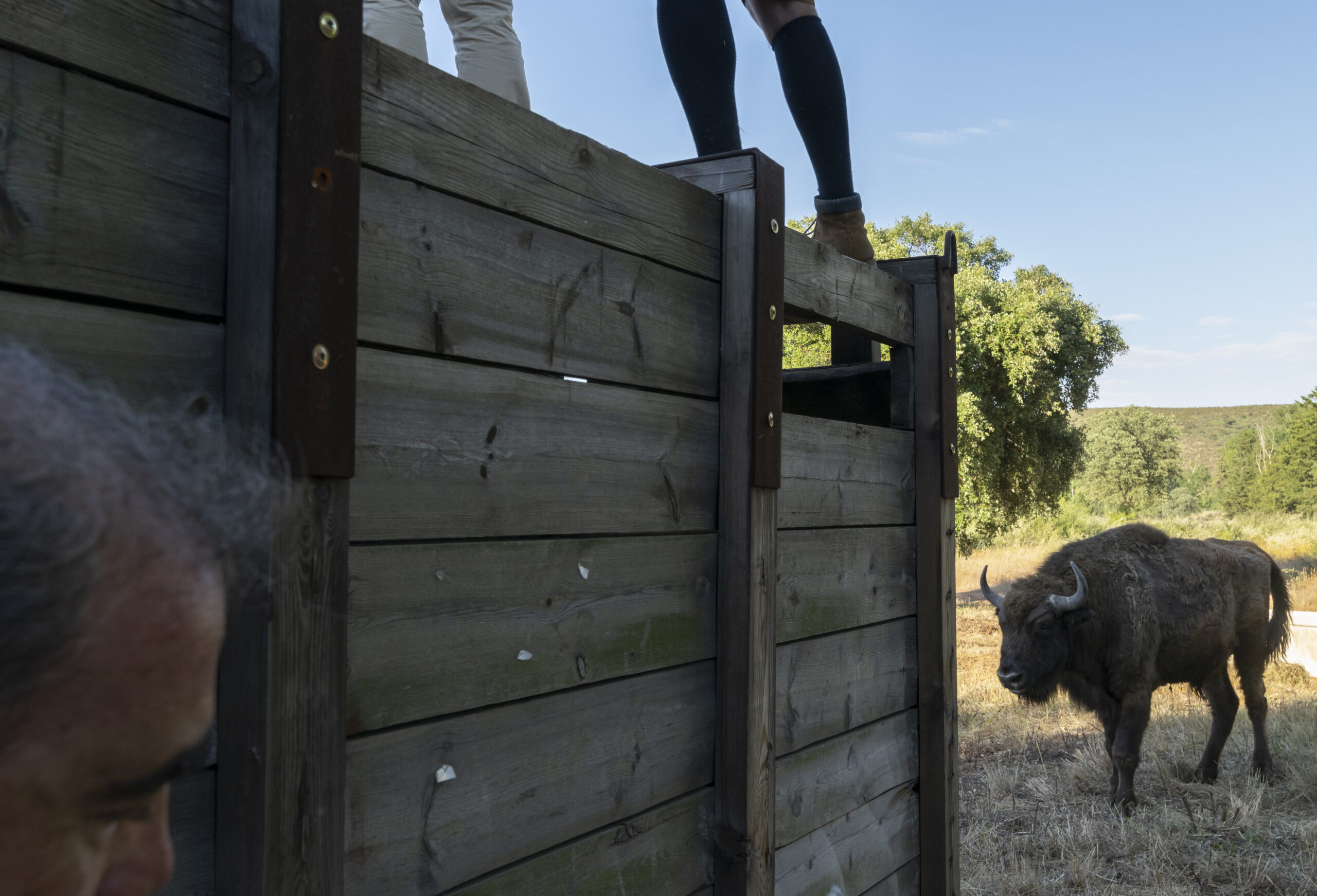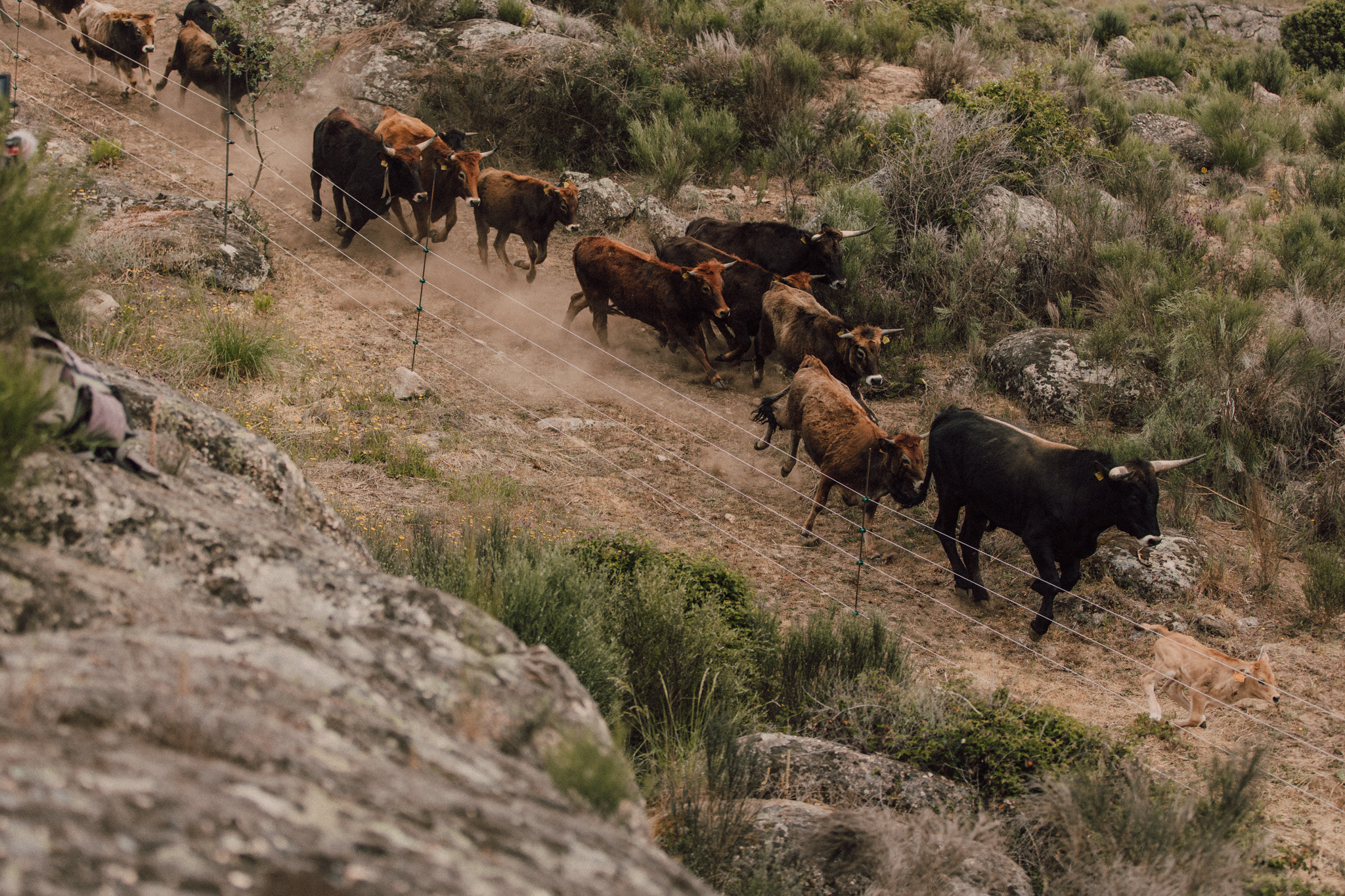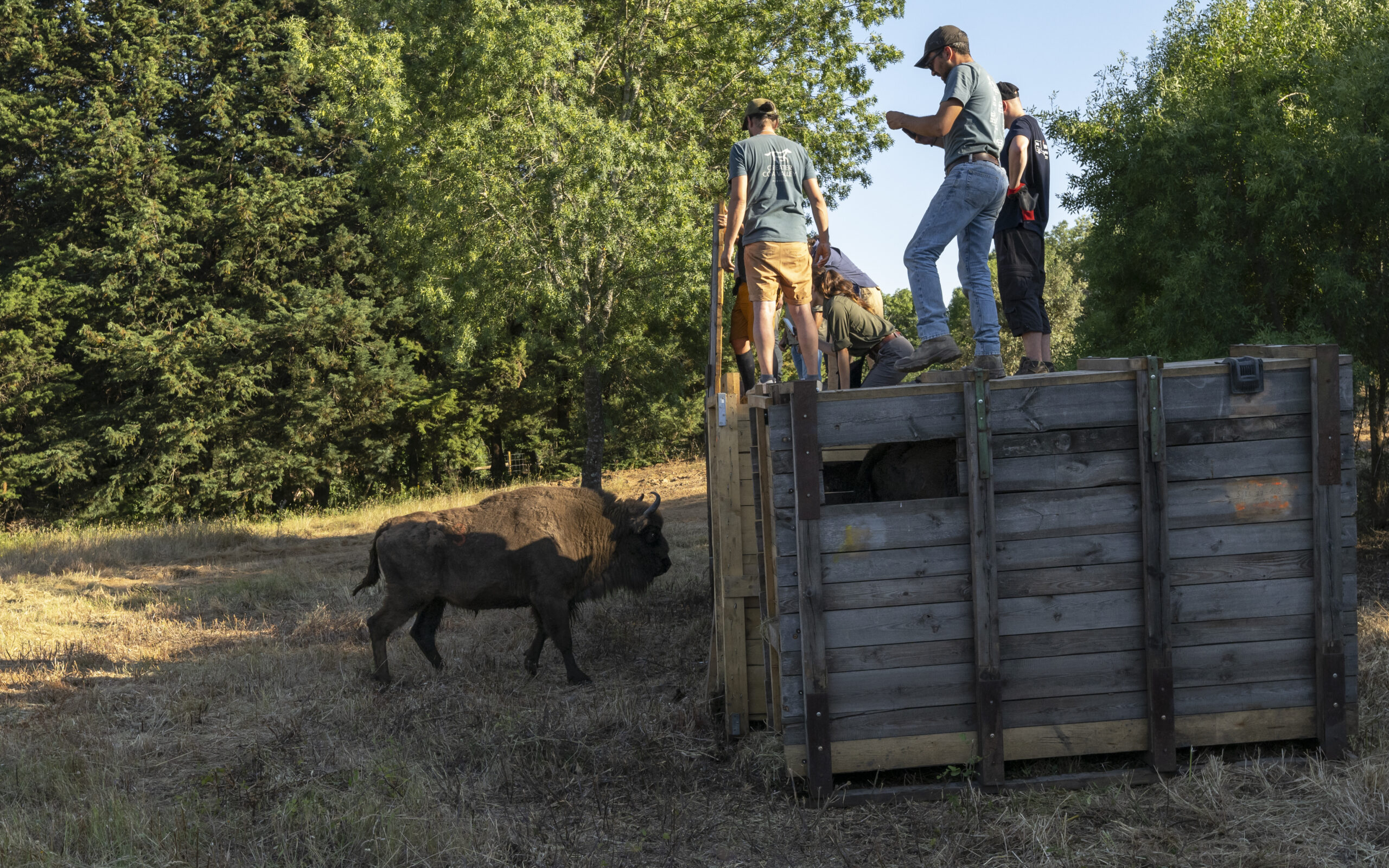A herd of eight European bison have just arrived in Herdade do Vale Feitoso in Portugal. Managed in cooperation with the Rewilding Portugal team, they will enhance carbon sequestration, boost biodiversity, and support the growth of nature-based tourism.

Pioneering translocation
A herd of eight European bison have arrived at the 7600-hectare Termas de Monfortinho and Herdade do Vale Feitoso estate, located in the Castelo Branco District, south of the Greater Côa Valley rewilding landscape. The translocation of the bison, which have been sourced from reserves across Poland – through the Polish State Forest and European Friends Society, and with the support of the European Bison Conservation Center (EBCC) – is being partially funded by a 71,000-euro grant from Rewilding Europe’s European Wildlife Comeback Fund. This is the first-ever translocation of European bison to Portugal. The translocation is also being sponsored through a partnership with wine-producing company Altas Quintas, which is raising funds for threatened wildlife species.
Roaming across part of the estate, the bison will promote biodiversity and help the landscape to lock up more atmospheric carbon. As large grazers, the animals will lower the risk of catastrophic wildfire by reducing flammable vegetation, creating natural firebreaks, and opening up forested areas, which lets in more light and allows grass to grow instead of scrub. Outbreaks of catastrophic wildfire are becoming increasingly common across Mediterranean regions as climate change leads to more extreme temperatures. This problem is compounded as shrubs encroach on areas where livestock have disappeared as a result of rural depopulation.

A progressive pilot
The European bison will be managed in cooperation with the Rewilding Portugal team. They will share the landscape with a herd of Tauros, which were translocated to the Greater Côa Valley in 2023 and recently moved to the estate. Once the bison have acclimatised to their new surroundings people will be allowed to view them, with a member of the Wild Côa Network – a network of more than 50 nature-based businesses in and around the Greater Côa Valley – set to organise tours.

“We are viewing this translocation as a pilot,” explains Rewilding Portugal team leader Pedro Prata. “The bison will be closely monitored to see how they acclimatise to the local landscape and climate. This is the first time that Rewilding Portugal team have managed bison, so it’s a learning process for us too. Members of the team will receive training in bison management.”
The European bison: a climate, biodiversity and community hero
As a keystone and flagship rewilding species, the European bison has the potential to be both a climate and biodiversity hero. This is one of the reasons why the ongoing comeback of this influential herbivore in European landscapes, coupled with efforts to support population growth, is so important.

Through their grazing, foraging, trampling and fertilising, bison help to maintain biodiversity-rich mosaic landscapes of forest, scrub, and grassland, as well as numerous micro-habitats, which host a wide range of plant and animal species. This has been highlighted by studies in Europe, as well as in North America with regard to the related American bison. These same interactions can boost the capture of atmospheric carbon in both vegetation and the soil, with carbon also stored in the bodies of the bison themselves. By supporting the growth of nature-based tourism, European bison can be community heroes too.
Historical context
While the European bison has not been recorded naturally on the Iberian Peninsula, remains of the now extinct steppe bison – from which all living bison today are descended – have been recorded in the region. Steppe bison became extinct around 10,000 years ago after the last ice age, but the European bison – which coexisted with steppe bison for tens of thousands of years in Europe – spread east across Europe as far as the Volga River and Caucasus Mountains. On the Iberian Peninsula, European bison perform a similar ecological function as the steppe bison once did, with recent research showing that the species is adapting well to Mediterranean climates in Spain.
European bison themselves were driven to the edge of extinction by hunting and habitat loss. When the last wild European bison was shot in the Caucasus in 1927, there were only 54 European bison left alive, all in captivity. Thanks to conservation efforts, the species has since made a remarkable comeback. Over the last decade, the number of European bison has increased from just over 2500 to around 9000 individuals.
Rewilding Europe’s efforts have seen European bison populations established in Romania’s Southern Carpathians and Bulgaria’s Rhodope Mountains. We are also supporting their comeback in the Oder Delta (Germany and Poland).

Let’s rewild together
The agile setup of the European Wildlife Comeback Fund is designed to support wildlife comeback in a convenient and flexible way. Rewilding Europe invites other initiatives working to establish and reinforce populations of keystone species in European landscapes to consider applying for a grant.
Those interested in contributing to wildlife recovery in Europe can support wildlife comeback with an online donation. If you’d like to invest more than 50,000 euros in the European Wildlife Comeback Fund, we’d love to get in touch with you personally.
Want to know more?